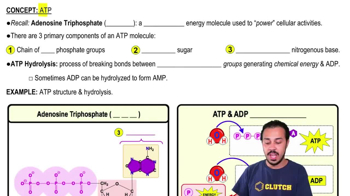Multiple Choice
The largest amount of ATP made by cellular respiration is created by the process of ______________, in the _____________ steps of aerobic cellular respiration.
4852
views
68
rank
 Verified step by step guidance
Verified step by step guidance



 1:06m
1:06mMaster Types of Phosphorylation with a bite sized video explanation from Bruce Bryan
Start learning